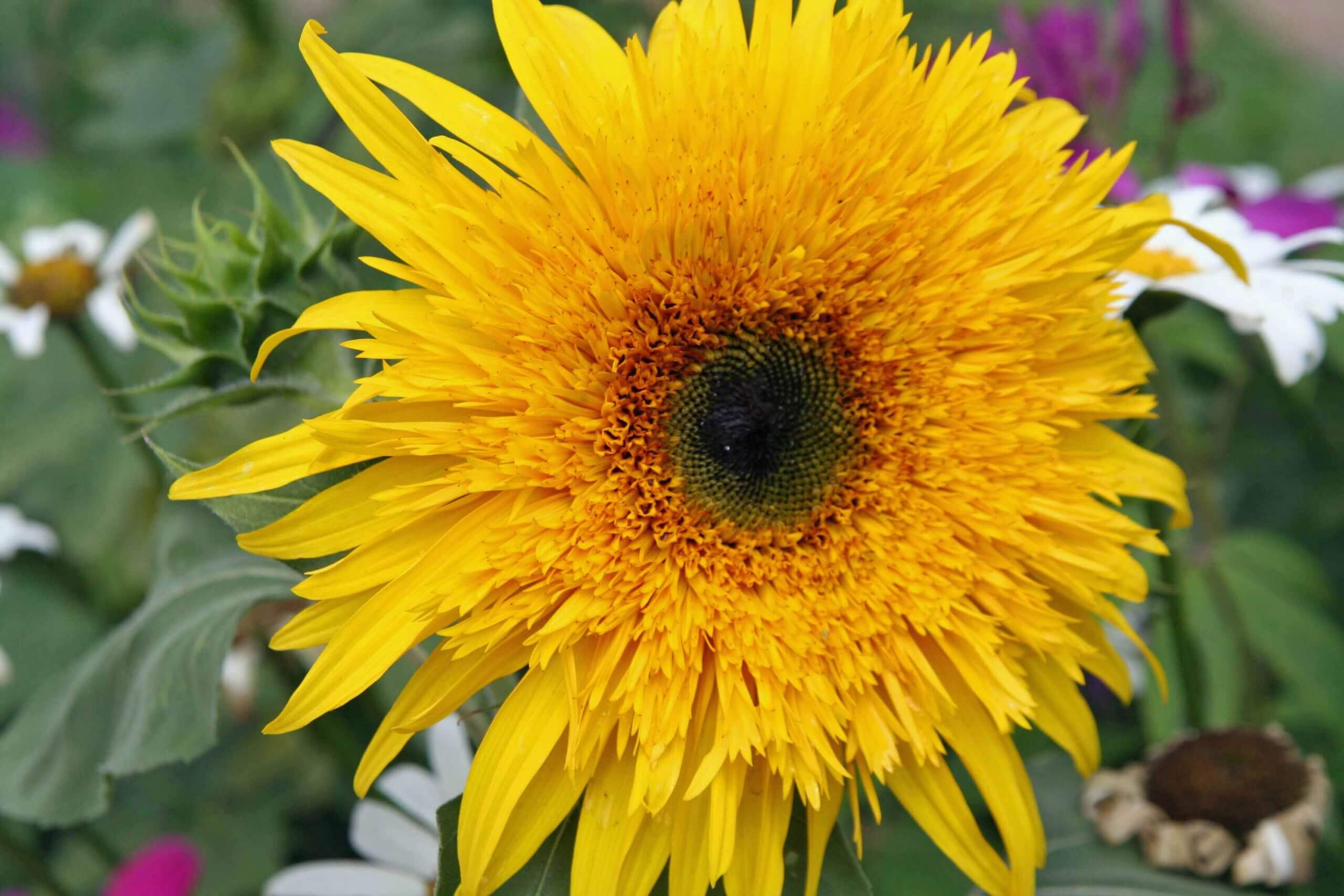
Annual sunflowers (Helianthus annuus) are pure floral gold. Their immense blooms have an almost storybook quality. They track the sun, creating a glowing warm basin of golden pollen and sweet nectar to draw bees and butterflies. Abundant oil-rich seed heads follow, feeding both wildlife and humans. For Native Americans, sunflowers symbolized courage and were cultivated as the “fourth sister,” along with corn, beans, and squash.
Sunflower History
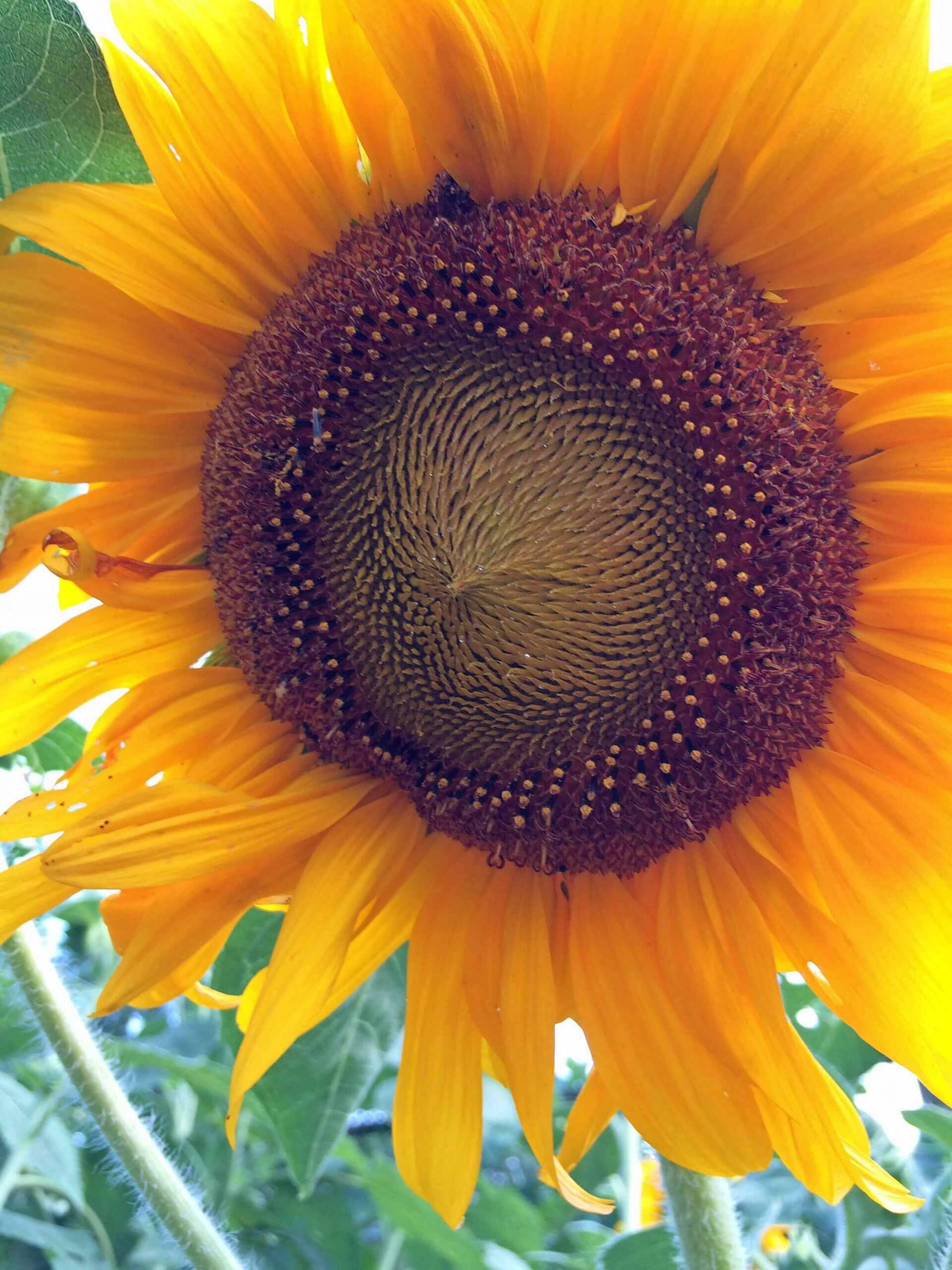
Sunflowers are North American natives, with natural populations extending from southernmost Canada to Central Mexico. Native Americans first cultivated them nearly 3000 years ago, using them for food, dye, medicine, and ceremony. Colonists quickly adopted the flowers—growing them for food, livestock forage, and beauty. Today, the nearly one-billion-dollar sunflower industry has them farmed and manufactured for oil, food, birdseed, cut flowers, and gardening.
Cultivated sunflowers can be traced to two population centers in the central and eastern US, according to research. From these, hundreds of cultivated varieties have arisen with diverse heights, flower sizes, and colors ranging from gold to bronze, orange, burnished red, near black, pale yellow, and ivory. Vibrant new varieties serve the seed, cut flower, and gardening markets, but some of the best selections are Native American heirlooms—offering qualities that sustained peoples for thousands of years.
Sunflowers and Wildlife
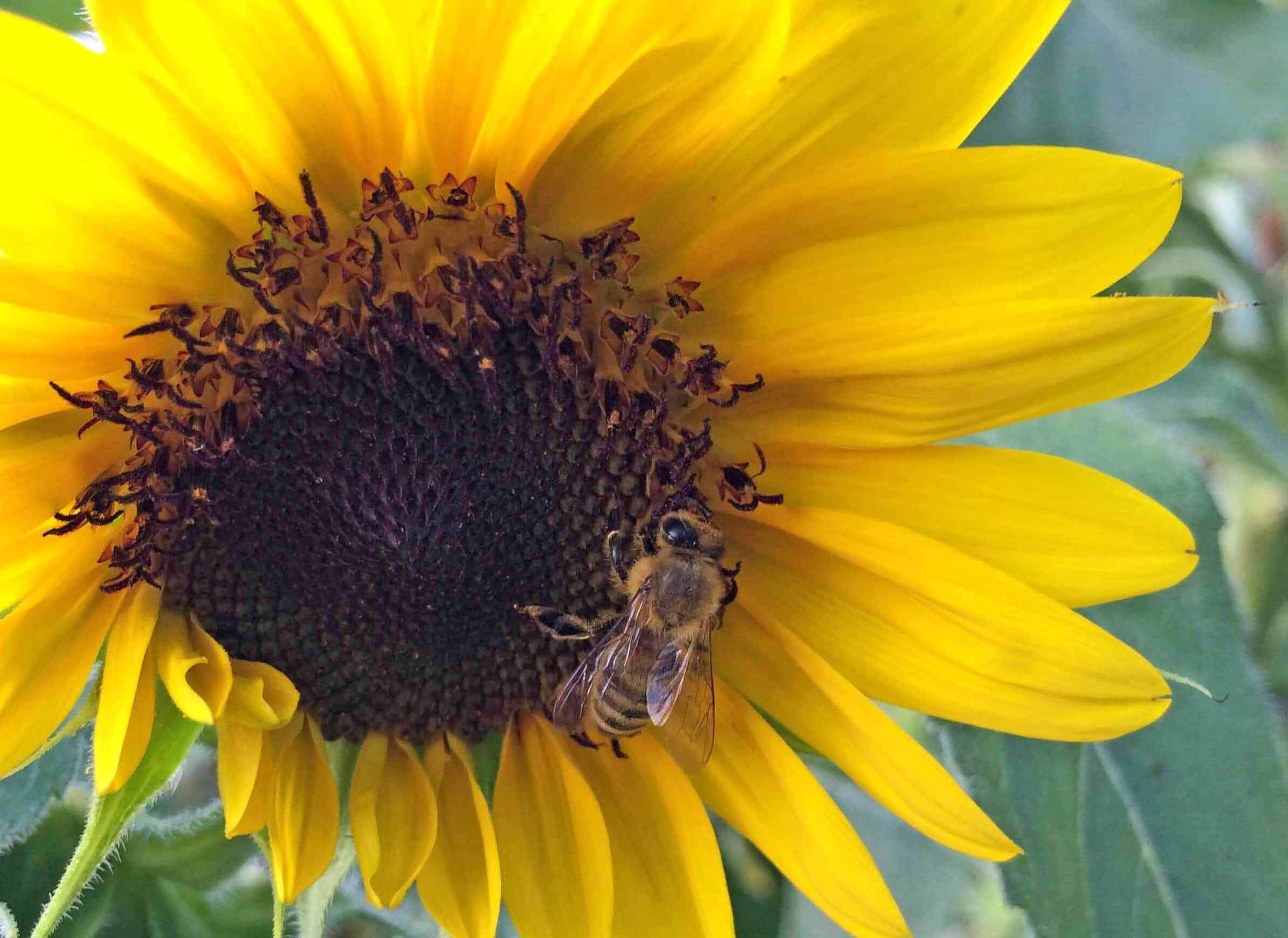
Honeybees and native bees rely on annual sunflowers for pollen and nectar, along with butterflies and other nectar feeders. Mature seed heads become songbird feeding stations—attracting finches, nuthatches, cardinals, and titmice—while also attracting many small mammals. Wildlife prefers large-headed varieties, which can be cut, dried, and saved to feed birds through winter. Avoid growing pollenless sunflower varieties for bees, because they offer less food value to these pollinators.
Sunflowers for Seed
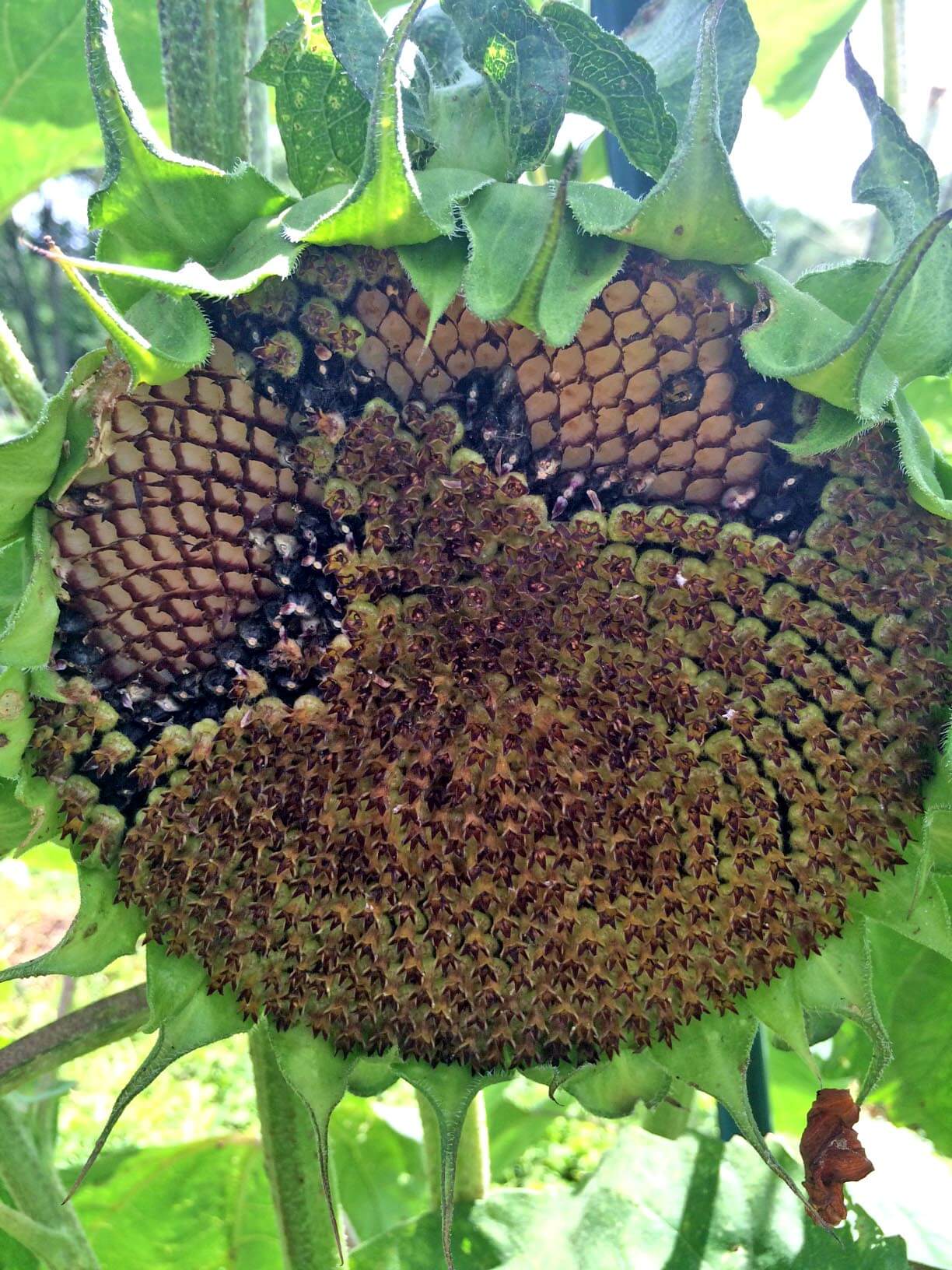
‘Mammoth Grey Stripe’ is the best-known seed sunflower! Its huge golden blooms are supported by strong stems able to hold the weight of the fully developed seed heads. The massive plants reach 10-12’ in height, and the heads of grey-striped seeds reach up to 12” across. The comparable ‘Mammoth Russian’ is slightly larger with golden petals and striped seed hulls. It reaches 14’ in height and bears 12-14” heads. ‘Giant White Seeded’ is another good seed producer with pure white seed hulls produced on 12” heads. Provide all large sunflowers with lots of space and expect many colorful goldfinches to visit as their heads develop. (Cut or cover any heads you want to save for winter birds!)
Native American Heirloom Sunflowers
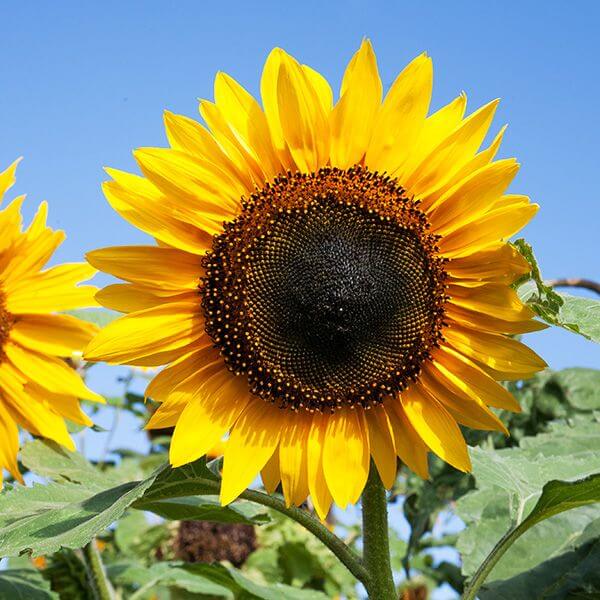
Native American sunflower varieties have unique traits valued by the tribespeople that saved them over generations. The black-hulled ‘Hopi Black Dye’ has large flowers with yellow petals and black-brown centers. The near-black seed hulls were used by the Hopi people to dye wool and baskets. A great Native American variety for eating is ‘Arikara‘. First collected on the Louis and Clarke expedition, these golden sunflowers were grown by the Arikara people (in present-day Missouri) for their massive seed heads that can reach 16” across. The seeds of this variety also germinate under cooler conditions than many other sunflowers.
Sunflowers for Cutting
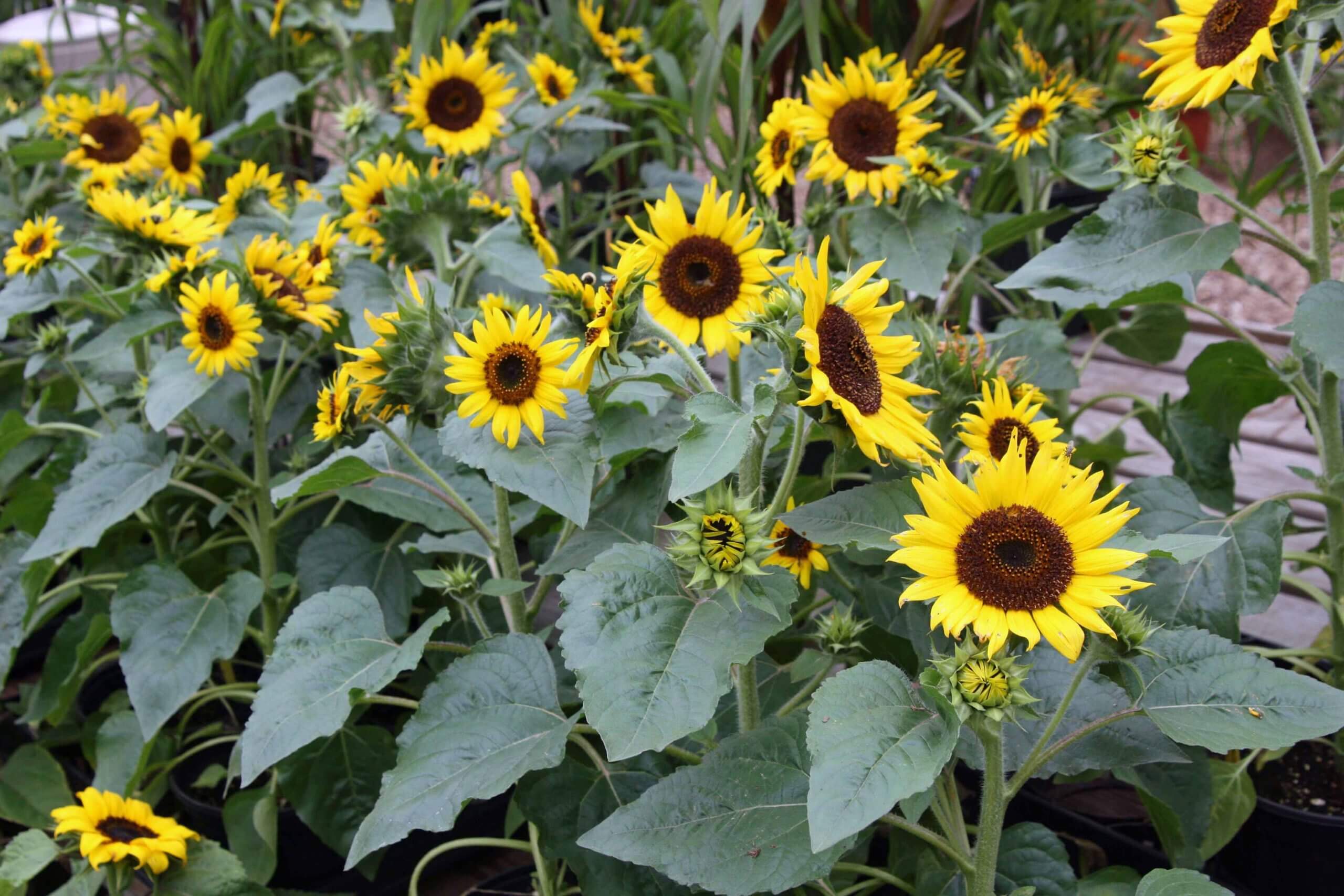
Sunflowers produce copious messy pollen, which is why pollenless varieties are preferred for cutting gardens. ‘Pro Cut’ has pollenless chocolate-brown centers and golden petals (much like a giant black-eyed-Susan) that look superb in arrangements. Children love ‘Teddy Bear’, a compact (2-3′), fully double, golden variety with minimal pollen. Choose ‘Sunrich Orange Summer’ for its yellow petals and pollenless brown centers. The deep burgundy ‘Prado Red‘ has almost black centers and bears many pollenless flowers perfect for cutting through summer.
Sunflowers for Gardens
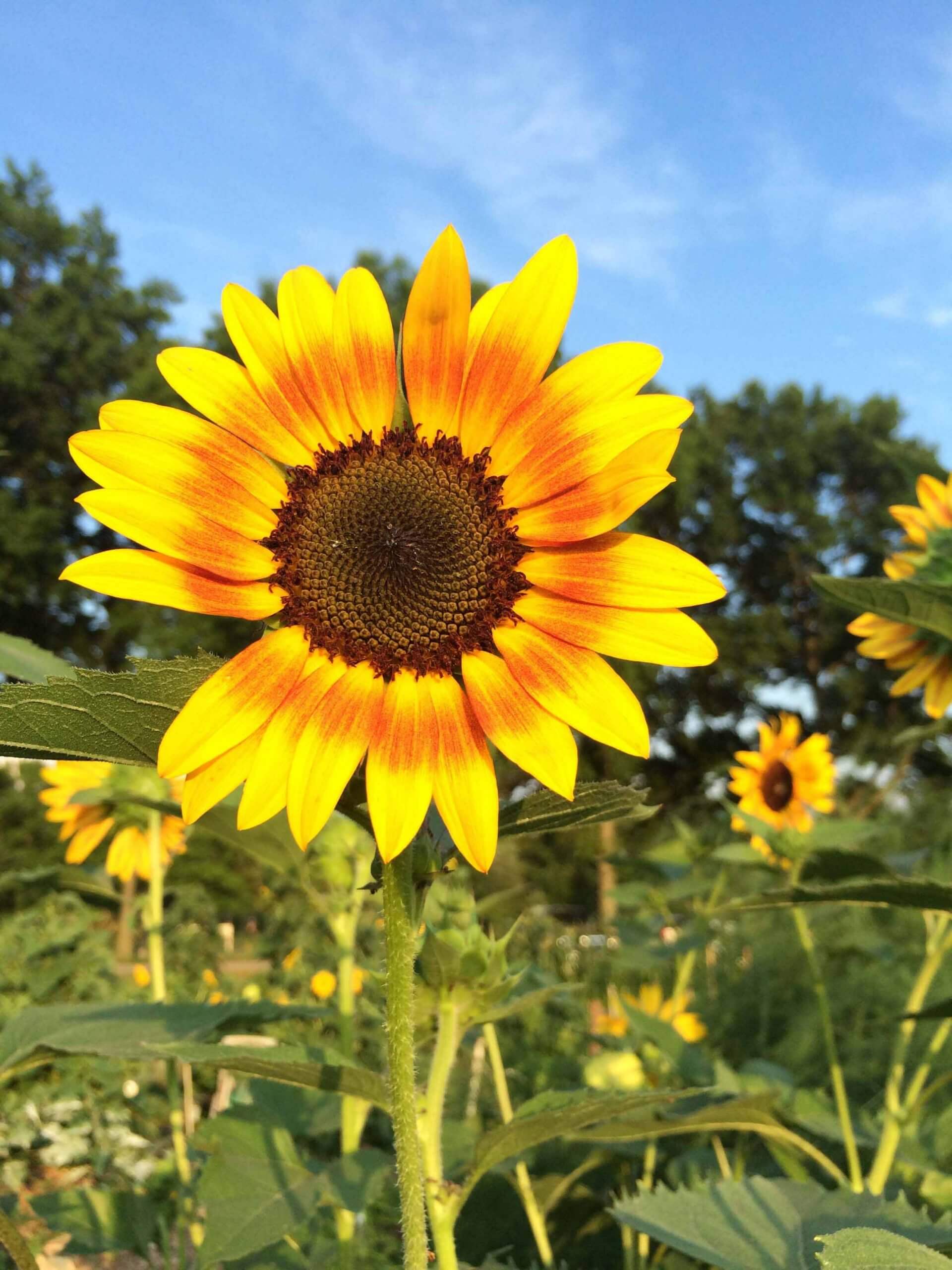
Choose shorter or colorful, long-flowering, multi-branched sunflowers for a big garden show. The well-branched Autumn Beauty Blend sunflowers have long-flowering bold blooms in shades of gold and burnished-red. The 5-6’ plants are perfect for large borders. The ivory and pale yellow flowers of ‘Italian White’ are small, delicate, and borne in profusion on 5-7′, well-branched plants. Both perform well in big garden spaces!
There are lots of super-compact varieties good for small-space gardening. Pick the 1-2′ ‘Big Smile‘ for containers and really small gardens. Its dark-centered yellow flowers are cheerful and prolific. The slightly taller ‘Peach Passion’ is a 2-4’ variety with loads of small, peachy yellow flowers over a season.
Growing Sunflowers
Sunflowers take 50-110 days to bloom from seed, depending on the variety. Plant seeds outdoors in fertile, well-drained soil to a depth of 1-2″, or indoors under grow lights in pots of Black Gold Seedling Mix. Amending garden soil with Black Gold Garden Soil or Black Gold Garden Compost Blend will help facilitate germination and deep root growth. Give sunflowers full sun and lots of space to grow, especially tall varieties. Provide minimal care once established, aside from occasional watering in dry weather.
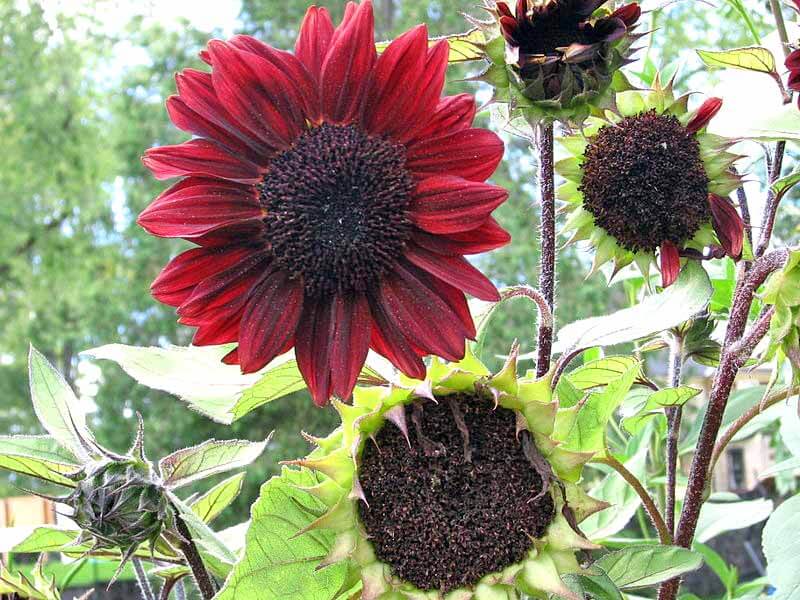
Refrain from planting sunflowers near areas where you intend to direct sow other seeds. Sunflowers excrete chemicals from their roots that reduce germination and seedling growth in many other plant species. This helps sunflowers naturally compete in the wild, but it can create problems in the garden.
Sunflowers are easy to grow, making them one of the best flowers for wildlife and enjoyment. They also self-sow, so you can expect interesting volunteers to pop up in your garden for years to come. Every garden needs a little sun from these cheerful, easy annuals.
